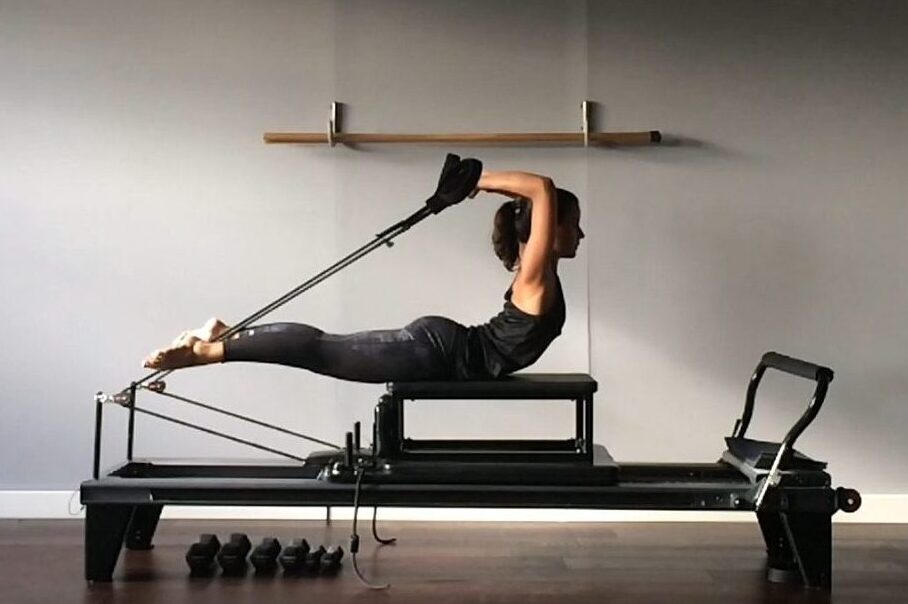Marathon running is as much about endurance and resilience as speed and distance. In the quest for peak performance, runners look to enhance their training, reduce the risk of injury, and accelerate recovery. As the London Marathon approaches let’s dive into how reformer Pilates, a dynamic, low-impact exercise system can transform long-distance runners and their preparation.
A Low-Impact Companion for High-Impact Athletes
Reformer Pilates offers a powerful yet low-impact workout, minimising stress on the joints while still challenging the body. This characteristic is especially beneficial for London marathon runners, who subject their bodies to considerable impact during training and races. By incorporating reformer Pilates into their routine, athletes can enhance muscular endurance, develop stronger connective tissues, and improve joint stability, all without additional strain on their bodies.
Core Stability: The London Marathon Runner’s Backbone
With its focus on core strength, Reformer Pilates provides the foundation for improved running performance. A strong core enhances stability, balance, and posture, enabling runners to maintain efficient form throughout the marathon. This efficiency is crucial, especially in the later stages of the race when fatigue sets in and the risk of injury increases. A well-conditioned core allows for better energy conservation, letting runners channel their strength into maintaining pace and tackling the distance ahead.
Enhanced Flexibility and Range of Motion
Flexibility and a broad range of motion are vital for achieving long, powerful strides. Reformer Pilates aids runners by increasing flexibility, which in turn, contributes to more effective and efficient movement patterns. This improvement not only aids performance but also plays a significant role in preventing injuries by allowing the body to absorb and distribute the impact of each step.
Correcting Imbalances: A Pathway to Symmetry
The repetitive nature of running often leads to muscular imbalances, where certain muscles become overdeveloped while others are neglected. Reformer Pilates addresses these imbalances by targeting the entire body, ensuring that neglected muscles are strengthened and overused ones are relieved. This balanced approach reduces the risk of injury, like IT band syndrome and shin splints, and contributes to a more stable, symmetrical running form.
Breathing Techniques for Endurance Enhancement
Proper breathing is a critical yet often underestimated aspect of marathon performance. Reformer Pilates emphasises controlled breathing, teaching runners to use their breath more efficiently. This skill is invaluable during a marathon, where efficient oxygen utilisation can significantly impact endurance and overall performance. Adopting mindful breathing and self-care practices into your training regimen can additionally lead to improved endurance, faster recovery, and a more enjoyable marathon experience. Perfect for runners aiming to conquer the London Marathon or any long-distance challenge.
Rapid Recovery: Bouncing Back Stronger
Reformer Pilates is not only focused on preparation but also recovery. The exercises included in the practice help in muscle recovery, reducing soreness and accelerating the healing process. With faster recovery, runners can resume their training sooner, ensuring they are ready for their next session or most importantly, race day.
Incorporating Reformer Pilates into London Marathon Training: Targeted Exercises for Runners
As the anticipation for the London Marathon builds, runners are looking for every edge to enhance their performance and resilience. Here are some specific Reformer Pilates exercises that are particularly effective for those preparing for marathon challenges:Here are some specific Reformer Pilates exercises that are particularly effective for those preparing for marathon challenges:

1. Footwork on the Reformer
Performing footwork exercises on the Reformer is an excellent way to strengthen the muscles in your legs and feet, which can enhance stability and improve push-off power with every stride. These exercises are also effective for improving ankle flexibility and reducing the risk of injuries that are common among runners.
2. Leg Circles
Leg Circles on the reformer emphasise hip strength and flexibility, which are crucial for efficient running mechanics. By increasing the range of motion in the hips, leg circles help in achieving longer strides and improving overall running efficiency.
3. The Runner
This aptly named exercise simulates the running motion while lying on the reformer, allowing for focused strengthening of the hip flexors and hamstrings. “The Runner” helps improve stride length and frequency – key factors in performance during the London Marathon.
4. Single Leg Stretch
Targeting core stability and leg strength, the Single Leg Stretch on the reformer is perfect for runners. It emphasises coordination and balance, engaging the abdominal muscles while one leg moves in a controlled manner, mimicking the alternate leg movement of running.
5. Planking on the Reformer
Planking exercises on the Reformer, including variations like the Side Plank, strengthen the core, shoulders, and arms, providing the stability runners need for a strong upper body. A stable core and upper body are essential for maintaining proper running posture, especially in the later stages of a marathon.
6. Standing Split
The Standing Split on the reformer focuses on improving hamstring flexibility and balance, which helps to develop effective stride length and power for a more efficient running form.
7. Mermaid Stretch
A wonderful exercise for opening up the sides of the body, including the obliques and intercostal muscles, the Mermaid Stretch improves breathing capacity and flexibility. Enhanced rib cage mobility allows for deeper, more efficient breaths, which is vital for endurance running.
Incorporating These Exercises into Your Routine
London Marathon runners can enhance their performance, prevent injuries, and improve their recovery time by including reformer Pilates exercises in their training regimen. These exercises aim to strengthen the core and legs, improve flexibility and balance, and promote efficient breathing. By covering the essential elements of running mechanics and physical preparedness required for a marathon, these exercises prove to be highly effective. Runner’s World recommends including Pilates in a runner’s training routine in their article “Why Runners Should Do Pilates”.
The Road to the London Marathon
With the London Marathon just around the corner, integrating reformer Pilates into training can be a game-changer for participants. Its comprehensive benefits address the needs of marathon runners, from building a robust core and improving flexibility to enhancing recovery. Whether you’re a seasoned marathoner or a first-timer, embracing reformer Pilates could be the key to crossing the finish line with strength and confidence.
Find a reformer Pilates class near you and book your preferred class today to improve your long-distance running technique and endurance.

